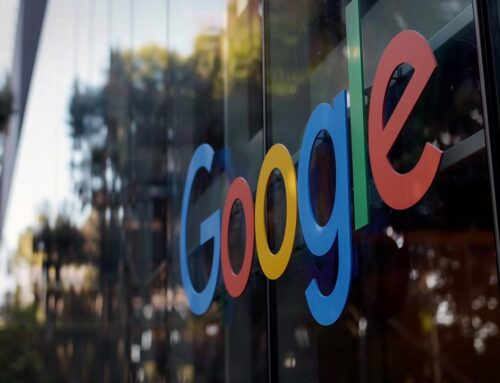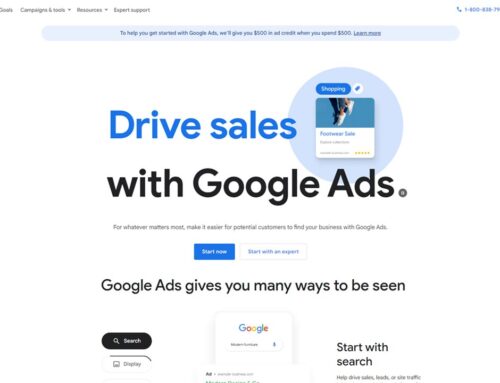Businesses are always seeking effective ways to reach their target audience and generate leads. One of the most popular and successful online marketing strategies is Pay-Per-Click (PPC) advertising. This article aims to provide you with a clear understanding of what PPC advertising is, how it works, its advantages, and essential tips for creating a successful PPC campaign.
PPC is a model of online advertising where advertisers pay a fee each time their ad is clicked. It is a way to buy visits to your site, rather than attempting to earn them organically. The primary goal of PPC advertising is to bring in potential customers, who are already searching for the products or services you offer. This article will dive deep into the core aspects of PPC advertising, helping you gain insights into its various dimensions, and enabling you to leverage it effectively for your business.
By reading this article, you will learn:
- The fundamentals of PPC advertising
- The different platforms and types of PPC ads
- How to set up and manage a successful PPC campaign
- The advantages and disadvantages of PPC advertising
- Tips and best practices for optimizing your PPC campaign
Table of Contents
- Introduction to Pay-Per-Click Advertising
- Platforms and Types of PPC Ads
- Setting up and Managing a PPC Campaign
- Advantages and Disadvantages of PPC Advertising
- Tips and Best Practices for Optimizing Your PPC Campaign
- Final Thoughts
Introduction to Pay-Per-Click Advertising
What is PPC Advertising?
Pay-Per-Click (PPC) advertising is a form of digital marketing in which advertisers pay a fee each time their ad is clicked by a user. The purpose of PPC advertising is to drive targeted traffic to a website, with the ultimate goal of generating leads or sales. The cost per click (CPC) can vary depending on several factors, including the competitiveness of the keywords, the quality of the ad, and the relevance of the landing page.
How Does PPC Advertising Work?
PPC advertising relies on a bidding system, where advertisers compete for ad placements on various platforms, such as search engines and social media websites. Advertisers set a maximum bid amount they are willing to pay for each click on their ad, and the ads with the highest bids are generally displayed more prominently. However, it is not solely based on bid amount; the quality and relevance of the ad and landing page also play a crucial role in determining the ad’s position.
The Role of Keywords in PPC Advertising
Keywords are the backbone of PPC advertising, as they help match your ads with user searches or target audience interests. Advertisers bid on specific keywords that they believe are relevant to their target audience and business. When users search for those keywords or display an interest in related topics, the platform may show the ad to those users. This ensures that your ads are displayed to users who are most likely to be interested in your products or services.
Bidding and Ad Auctions in PPC
Most PPC platforms use an ad auction system to determine which ads are displayed and in what order. When a user conducts a search or interacts with content related to your target keywords, the platform will run an auction to decide which ads are shown. The system considers multiple factors, including the advertiser’s maximum bid, the ad’s relevance, and its quality score (a metric that evaluates the ad’s overall quality and performance). This ensures that the most relevant and high-quality ads are displayed, providing a better user experience.
Platforms and Types of PPC Ads
There are various platforms where you can run PPC advertising campaigns, each with its unique types of ads.
Google Ads
Google Ads, formerly known as Google AdWords, is the most popular PPC advertising platform. It offers different types of ad formats, including:
- Search Ads: These ads appear on the Google search results page when users search for specific keywords. They typically include a headline, description, and URL.
- Display Ads: These are visual ads that appear on websites within the Google Display Network, reaching users who are browsing sites related to your target keywords or interests.
- Video Ads: Video ads can be displayed before, during, or after YouTube videos or on partner sites within the Google Display Network.
- Shopping Ads: These ads showcase products with images, prices, and store information, appearing on Google Shopping and in search results.
Bing Ads
Bing Ads is Microsoft’s PPC advertising platform, allowing advertisers to reach users on the Bing search engine and partner sites. Although it has a smaller market share than Google Ads, it can offer less competition and lower costs per click.
Social Media Advertising Platforms
Various social media platforms offer their own PPC advertising options:
- Facebook Ads: Facebook allows advertisers to target users based on demographics, interests, and behaviors, with ad formats such as image, video, carousel, and slideshow ads.
- Instagram Ads: Instagram, owned by Facebook, offers similar targeting options with ad formats that include images, videos, carousels, and Stories ads.
- Twitter Ads: Twitter offers Promoted Tweets, Promoted Accounts, and Promoted Trends, allowing advertisers to target users based on interests, keywords, and demographics.
- LinkedIn Ads: LinkedIn’s PPC advertising options target users based on job titles, industries, companies, and more, with ad formats such as Sponsored Content, Sponsored InMail, and Display Ads.
Other PPC Advertising Platforms
There are many other PPC advertising platforms available, such as Amazon Advertising, Pinterest Ads, and Quora Ads, each with its unique targeting options and ad formats. Choosing the right platform depends on your target audience, objectives, and the nature of your business.
Setting up and Managing a PPC Campaign
To set up and manage a successful PPC campaign, follow these steps:
Define Your Goals and Objectives
Before launching a PPC campaign, it’s crucial to define your goals and objectives. This can include increasing brand awareness, generating leads, driving sales, or boosting website traffic. Having clear objectives helps you make informed decisions about your campaign strategy, targeting, ad creatives, and budget.
Conduct Keyword Research
Keyword research is a critical component of PPC advertising. Identify the most relevant keywords for your campaign based on your target audience, products, and services. Use keyword research tools, such as Google Keyword Planner or SEMrush, to find keywords with high search volume and low competition. This will help improve your ad’s visibility and click-through rates while reducing costs.
Create Compelling Ad Copy
The success of your PPC campaign largely depends on the quality of your ad copy. Write compelling headlines and descriptions that clearly communicate the benefits of your products or services. Include a strong call-to-action (CTA) to encourage users to click on your ad and visit your website.
Set Up Your Campaign Structure
A well-organized campaign structure is essential for effective management and optimization. Organize your campaigns and ad groups based on themes, products, or services to ensure that your ads and keywords are closely related. This improves your ad’s relevance and quality score, leading to better ad placements and lower costs.
Monitor and Optimize Your Campaign
Regularly monitor your PPC campaign’s performance using metrics such as click-through rate (CTR), cost per click (CPC), and return on investment (ROI). Analyze this data to identify areas of improvement and optimize your campaign accordingly. Adjust your bids, refine your keywords, and test different ad creatives to continually improve your campaign’s performance.
Advantages and Disadvantages of PPC Advertising
PPC advertising offers several benefits, but it also comes with some challenges.
Advantages
- Immediate Results: Unlike organic search strategies, PPC advertising can deliver immediate results by driving targeted traffic to your website as soon as your campaign goes live.
- Targeted Traffic: PPC advertising allows you to target specific keywords, demographics, interests, and behaviors, ensuring that your ads reach the most relevant users.
- Measurable and Trackable Performance: PPC platforms provide detailed performance data, allowing you to measure and track your campaign’s success and make data-driven decisions.
- Budget Control: With PPC advertising, you can set daily or monthly budgets to control your ad spend and ensure that you do not exceed your marketing budget.
Disadvantages
- Requires Constant Monitoring: PPC campaigns require regular monitoring and optimization to maintain their performance and avoid wasted ad spend.
- Can Be Expensive: Competitive keywords and industries can result in high CPCs, making it challenging for smaller businesses to compete with larger advertisers.
- Steep Learning Curve: PPC advertising involves various platforms, tools, and strategies, which can be overwhelming for beginners and may require a significant investment of time and resources to master.
Tips and Best Practices for Optimizing Your PPC Campaign
Continuously Test and Refine Your Ad Copy
Regularly test different headlines, descriptions, and CTAs to determine which ad copy resonates best with your target audience. Use A/B testing to compare different ad variations and refine your copy based on performance data.
Focus on High-Performing Keywords
Identify and prioritize the keywords that generate the highest click-through rates, conversions, and ROI for your campaign. Allocate more budget to these high-performing keywords and pause or reduce bids on underperforming ones.
Optimize Your Landing Pages
Ensure that your landing pages are relevant, engaging, and optimized for conversions. A well-designed landing page with clear CTAs and compelling content can significantly improve your campaign’s performance and ROI.
Utilize Negative Keywords
Negative keywords prevent your ads from being triggered by irrelevant searches, helping you reduce wasted ad spend and improve the overall quality of your traffic. Regularly update your negative keyword list to exclude terms that do not align with your campaign goals.
Implement Ad Extensions
Ad extensions enhance your ads by providing additional information or options, such as call buttons, location details, or sitelinks. Utilize ad extensions to improve your ad’s visibility, click-through rate, and overall performance.
Employ Remarketing Strategies
Remarketing allows you to target users who have previously interacted with your website or ads. Implement remarketing strategies to re-engage potential customers and increase the likelihood of conversions.
Final Thoughts
PPC advertising is an essential tool in the digital marketing landscape, offering businesses the opportunity to reach their target audience quickly and efficiently. The most important takeaway from this article is that understanding the fundamentals of PPC advertising and implementing best practices can lead to successful campaigns and positive return on investment (ROI). With consistent monitoring, optimization, and data-driven decision-making, you can maximize your PPC campaign’s effectiveness and achieve your desired business outcomes.





